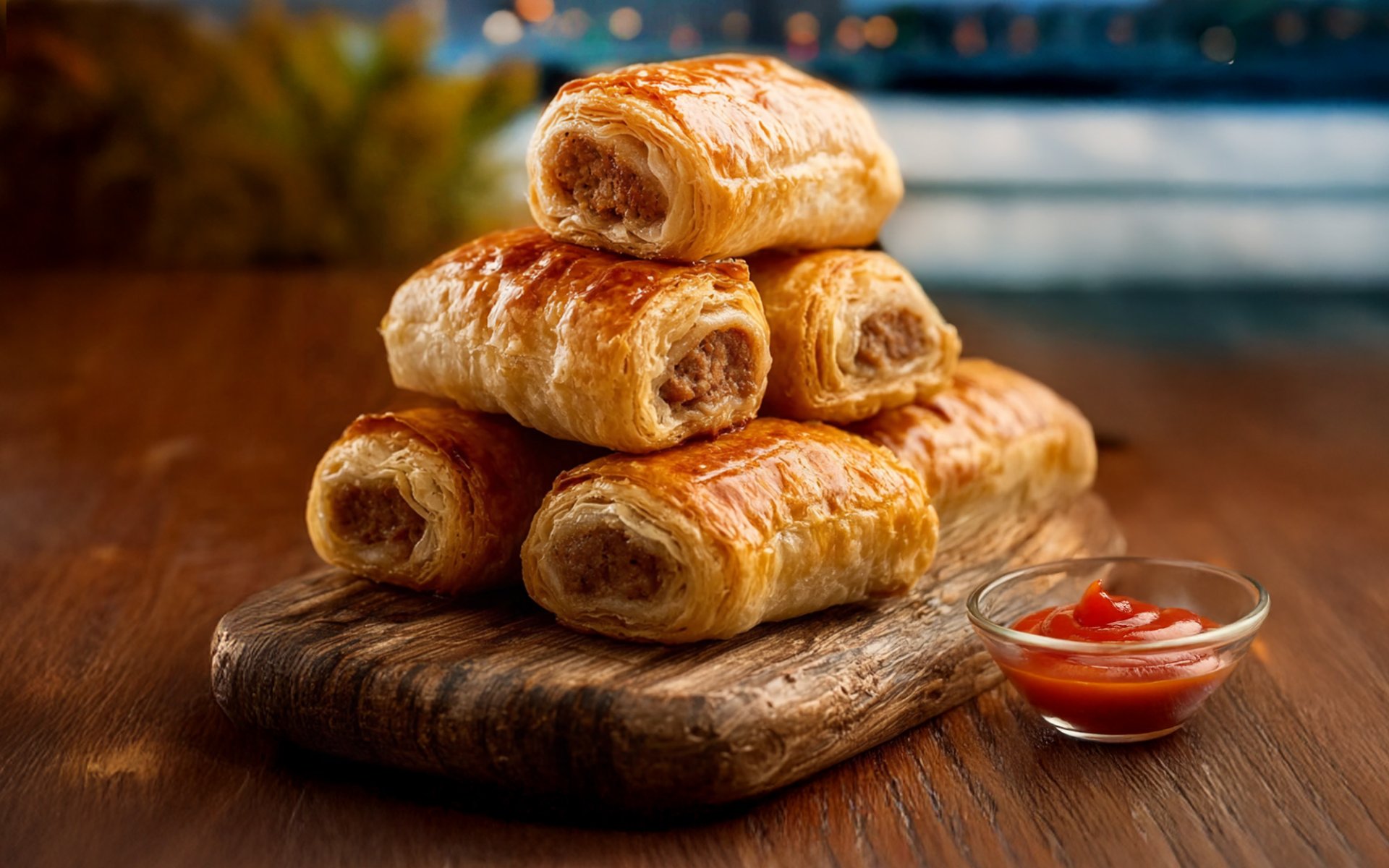Sausage Roll
Last updated: 10 Oct 2025

A Sausage Roll is a popular Western-style baked snack widely enjoyed in many Commonwealth countries. It consists of a sausage filling wrapped in puff pastry, baked until golden brown and flaky, and typically served warm with tomato sauce or mustard.
During the late Victorian era, Sausage Rolls gained popularity among the middle class as well. Though initially seen as a working-class snack, their convenience and rich flavor allowed them to transcend social boundaries and become a national favorite.
In the 21st century, the Sausage Roll continues to evolve, adapting to diverse tastes and dietary preferences. Modern versions include fillings like coriander sausage, curry-flavored sausage, cheese blends, or even premium meats such as venison, duck, or lamb showcasing the creativity of contemporary cuisine.
Ancient origins of wrapping meat in dough
The idea of wrapping meat in dough is not new. This culinary technique dates back to ancient Greek and Roman times, when people wrapped meat, stews, seafood, or vegetables in dough to retain their moisture and freshness a convenient method for soldiers and travelers who needed food that could last on long journeys. The pastry also acted as an edible container, reducing the need for dishes or utensils.Evolution through Europe and the creation of Pâté en Croûte
As time passed, this concept spread throughout Europe. A major evolution came in 13th-century France with the invention of Pâté en Croûte a dish made from minced meat and liver encased in pastry and baked until aromatic and golden. This dish became highly popular among the French aristocracy.The birth of the modern Sausage Roll in London
However, the modern Sausage Roll as we know it today originated in early 19th-century London, particularly during the Napoleonic Wars (18031815), a period marked by rapid social and economic change. London was transforming into a hub of industry and trade, filled with factory and dock workers who needed convenient, affordable, and portable meals.Inspired by France but made for the English working class
Food historians believe the Sausage Roll was inspired by Frances Pâté en Croûte but simplified to suit the working class in England. It was originally made with inexpensive minced pork mixed with herbs and spices, wrapped in shortcrust pastry a dense, cookie-like dough that was easy and inexpensive to make, ideal for mass production.The rise of puff pastry and mass popularity
By the late 19th century, as puff pastry became more accessible and affordable, it replaced shortcrust as the preferred dough, offering a lighter, flakier texture and a more refined appearance.A snack that crossed class boundaries
During the late Victorian era, Sausage Rolls gained popularity among the middle class as well. Though initially seen as a working-class snack, their convenience and rich flavor allowed them to transcend social boundaries and become a national favorite.
Spreading across the Commonwealth
Over time, Sausage Rolls spread to other countries influenced by British culture, particularly Australia and New Zealand, where they became a staple snack. Australians often enjoy them as a quick bite or breakfast, served with tomato sauce a uniquely Aussie tradition.In the 21st century, the Sausage Roll continues to evolve, adapting to diverse tastes and dietary preferences. Modern versions include fillings like coriander sausage, curry-flavored sausage, cheese blends, or even premium meats such as venison, duck, or lamb showcasing the creativity of contemporary cuisine.
Tags :
Related Content
Getting to Know Pigs in Blankets One of the Most Popular Christmas Dishes in the United Kingdom
Tracing the History of Cranberry Sauce A Dish of Great Significance for Thanksgiving


